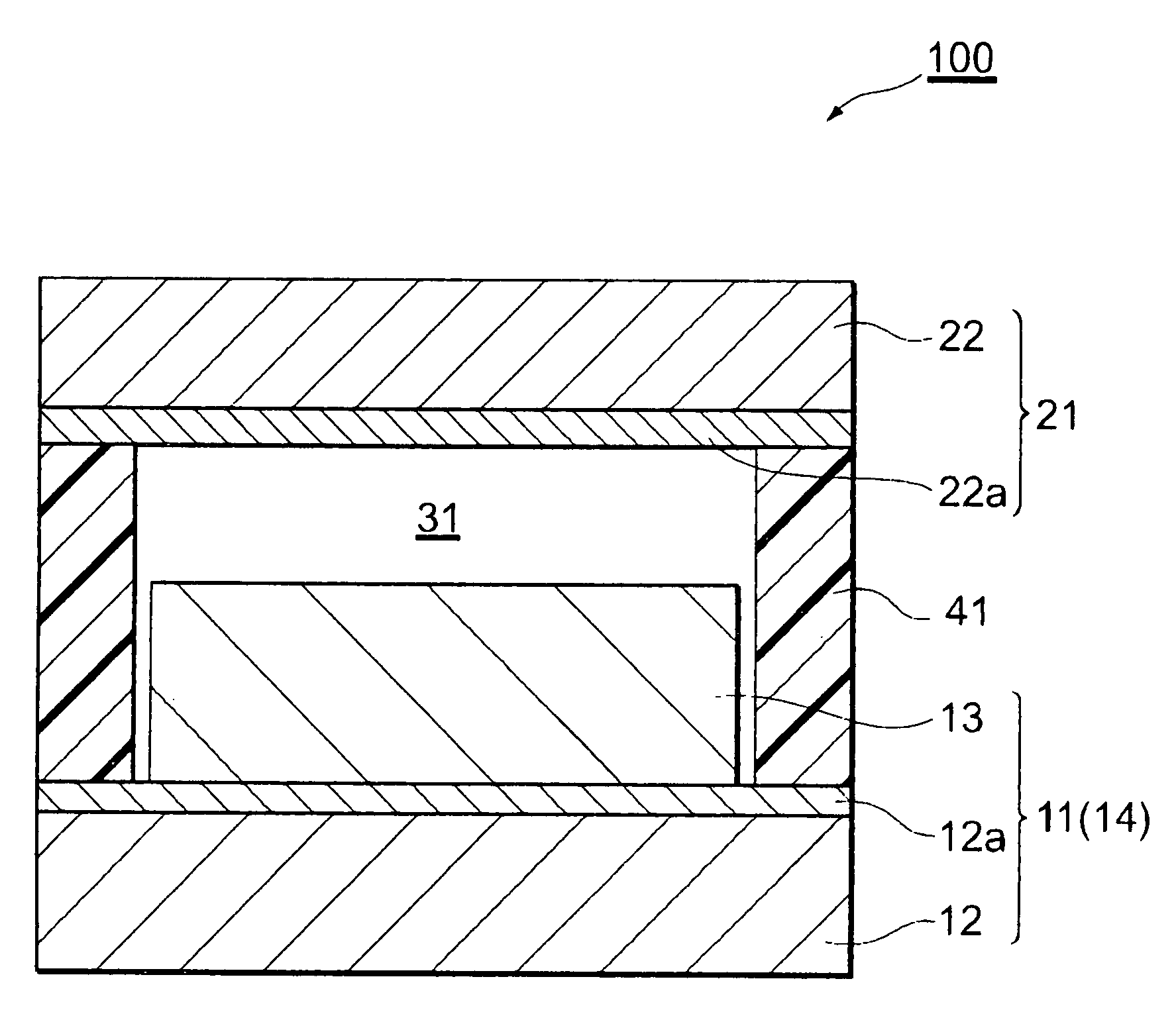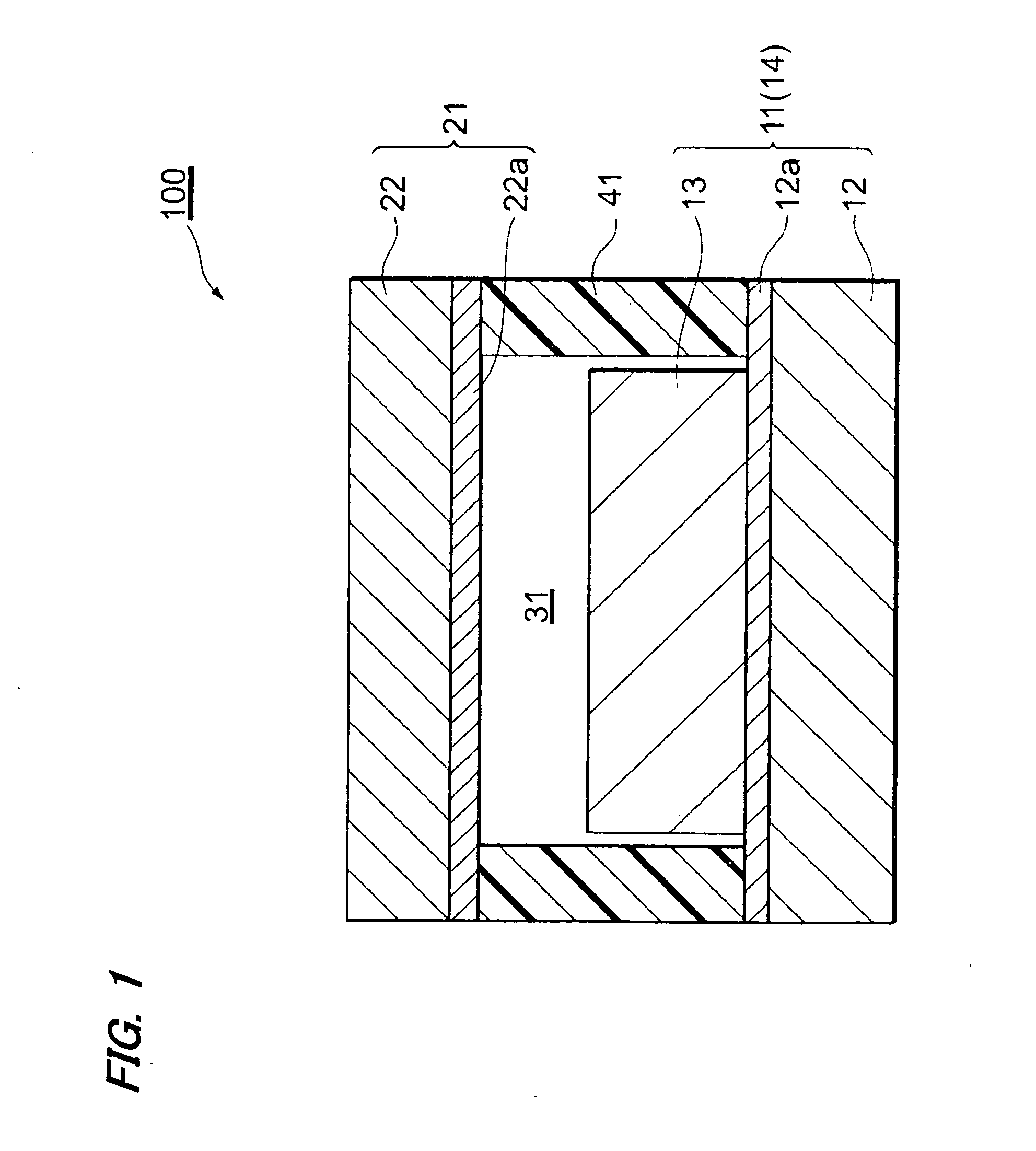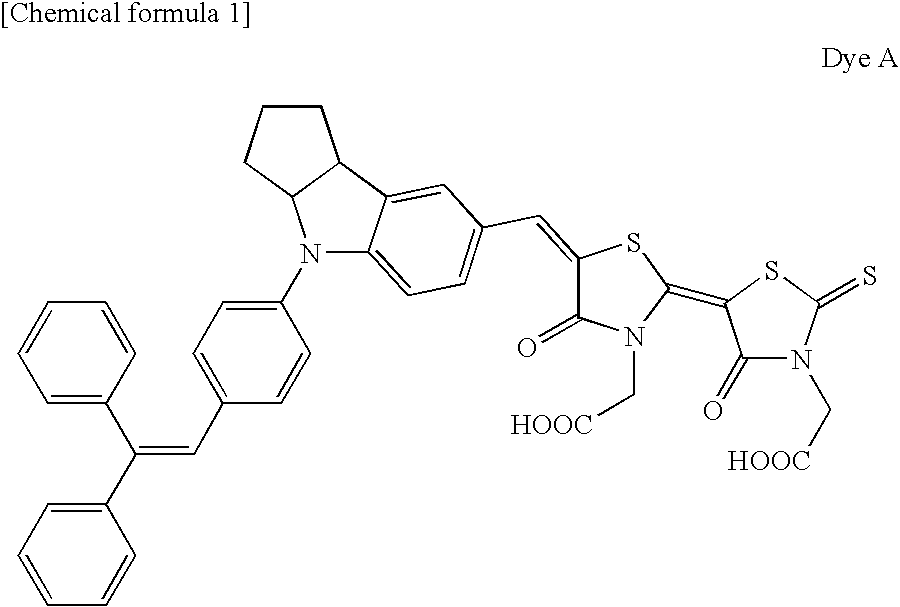Dye-sensitized solar cell and organic solvent-free electrolyte for dye-sensitized solar cell
- Summary
- Abstract
- Description
- Claims
- Application Information
AI Technical Summary
Benefits of technology
Problems solved by technology
Method used
Image
Examples
example 1
[0048]First, a dye-supported electrode was prepared in the following procedure.
[0049]A transparent glass substrate (TCO: manufactured by AGC Fabritech, size: 25 mm long×25 mm wide×1.1 mm thick) having fluorine-doped SnO2 as a transparent conducting film was prepared. Then, 750 ml of a 0.1 M aqueous solution of potassium chloride was prepared as an electrolyte solution. In the resulting electrolyte solution, the transparent conducting film of the transparent glass substrate was disposed so as to face a platinum plate used as a counter electrode. While carrying out bubbling with oxygen by using a silver / silver chloride electrode as a reference electrode, controlled-potential electrolysis (preliminary electrolysis) was performed at a potential of −1.0 V (vs. Ag / AgCl). The electrolysis was performed under the conditions of a temperature of 70° C. and a charge quantity of −2.35 C. This preliminary electrolysis is performed with a view to modifying the electrolyte and the surface of the t...
examples 2 to 5
[0060]In a similar manner to Example 1 except that the inorganic iodine compound was changed to those listed in Table 1, organic solvent-free electrolytes (quasi-solid electrolytes) of Examples 2 to 5 were prepared. Furthermore, in a similar manner to Example 1 except for the use of the organic solvent-free electrolytes of Examples 2 to 5, dye-sensitized solar cells of Examples 2 to 5 were fabricated, respectively. Measurement results are shown in Table 2.
examples 6 and 7
[0061]In a similar manner to Example 1 and Example 3 except for the use of a counter electrode obtained by forming, on the transparent conducting film of the counter electrode used in Example 1, a platinum layer of 100 nm thick by sputtering, dye-sensitized solar cells of Examples 6 and 7 were fabricated, respectively. Measurement results are shown in Table 2.
PUM
 Login to View More
Login to View More Abstract
Description
Claims
Application Information
 Login to View More
Login to View More - R&D
- Intellectual Property
- Life Sciences
- Materials
- Tech Scout
- Unparalleled Data Quality
- Higher Quality Content
- 60% Fewer Hallucinations
Browse by: Latest US Patents, China's latest patents, Technical Efficacy Thesaurus, Application Domain, Technology Topic, Popular Technical Reports.
© 2025 PatSnap. All rights reserved.Legal|Privacy policy|Modern Slavery Act Transparency Statement|Sitemap|About US| Contact US: help@patsnap.com



